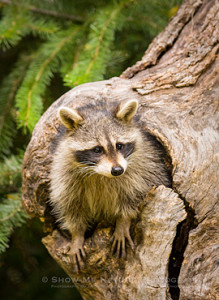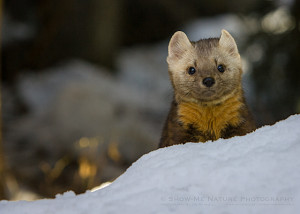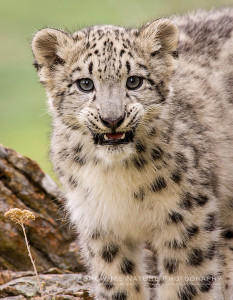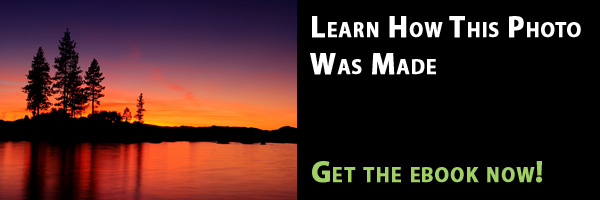
Defining “Captive”
One of the first things we need to do is to define “captive.” Does this mean a caged animal? Or does photographing a bird at a feeder equate to capturing a “captive photograph?” We must each define what our ethics are. Each of us must establish our own definition and boundaries. Like about anything else in life, we all see things a bit differently, and this is when photographic ethics can divide us as photographers.
Why Photograph Captive Animals?
Why would someone want to photograph a captive animal? My personal preference is to photograph only wild animals (which I also call a bird at a feeder). But there are some times when photographing captive animals makes sense to me. For example, it makes sense to me to photograph a captive animal if it is “non-native” (i.e. it does not live in the United States). Or when you are photographing an animal in a controlled environment, such as learning how to photograph animals. Another example might be when you want to capture a specific behavioral shot.

“Non-Native” Animals
If you want to photograph a snow leopard, you certainly cannot shoot one in the United States! In fact, if you travel to where the snow leopard lives, high in the mountains of Pakistan/Afghanistan, you would be extremely lucky to see one (your chances at winning the lottery would probably be better!). In addition, the cost of a trip to such a location is often prohibitive, so the choices are quite simple: photograph a captive snow leopard, or don’t shoot one at all!

Capturing a Captive Animal in a Learning Environment
While training for wildlife photography after I left my corporate job a number of years ago, I enrolled in two classes, “Photographing Wildlife” and “The Business of Nature Photography.” Both classes included photographing animals in a controlled environment. Following lectures by a successful, professional nature photographer, we would shoot as a group with captive animals, followed by image critiques. This was very useful to me, and I attribute some of my behavioral/action images I capture today from this learning experience.
Specific Behaviors
Sometimes, you may be looking for a specific behavior from a species. In this instance, it may be advantageous to photograph a captive animal, where you will likely be spending more time with the species and increasing your odds to capturing the wanted behavior.

Important Factors When Photographing Captive Animals
If you photograph captive animals, there are a few things you should look for. First, do your homework upfront and check out the person or facility that you are considering using. How well do they treat and care for the animals they have? Ask for references, and check them out. What kind of food/shelter are given to their animals?
What is the facility’s qualifications? Do they have a suitable background with animal care? Do they have a good veterinarian that they use for both routine and emergency animal care?
Ask about the scheduling of animals for photo shoots. Are the animals given a regular “rest time,” away from people?
Back to Ethics
If you decide to photograph captive animals, remember to be ethical, not only when photographing, but when editing and presenting your work to others.
I always make sure that I label my captive animal images as “Captive.” You don’t want to misrepresent your work and I have found that it’s always best to be open and honest. A few years ago, one of my photography friends showed me a beautiful image of a bird of prey as it was landing. When I commented on the image, I was told “sometimes you just get lucky.” Some time later, I overheard another person commenting to the same photographer, on the same image. The photographer told that person, “that was a captive animal and the handler had just called the bird in to land.” I have to tell you, I lost some respect for that photographer. In my mind this was “lying by omission.”
And, by the way, all of the images I used in this post were captured using captive animals.
What ethics did I miss? Have you ever photographed captive animals? How do you treat photographic ethics in nature?
Get more great tips in our free weekly newsletter.
 About the Author: Jim Braswell is a lifelong resident of Missouri, photographing nature in Missouri and beyond. His photographic passion is wildlife and wildflowers. When working with wildlife, his goal is to capture animal behaviors and actions. Besides photographing nature, Jim teaches photography and Photoshop at a local career center and participates in several art fairs/festivals every year. View more of his work on his website at: http://www.showmenaturephotography.com/
About the Author: Jim Braswell is a lifelong resident of Missouri, photographing nature in Missouri and beyond. His photographic passion is wildlife and wildflowers. When working with wildlife, his goal is to capture animal behaviors and actions. Besides photographing nature, Jim teaches photography and Photoshop at a local career center and participates in several art fairs/festivals every year. View more of his work on his website at: http://www.showmenaturephotography.com/

This is a good topic Jim. Thanks! I always state whether one of my pictures were in the wild, or if they were captive shots. For one thing, the wild ones mean more to me, having giving me a sense of accomplishment. It validates my photos, since the composition of the captive ones may be better, but I usually get a laugh when I explain that the rattlesnake I encountered just wouldn’t pose for me.
Thanks, Michael! Yes, given the opportunity, shooting wild is always better for me. Like you, a much stronger appreciation of the shot is gained from a non-captive animal.
Happy Shooting! Jim
The underlying issue can be reduced to the difference between the product or the process. Photography is an art form. Does it really make a difference how the image was attained? Or is it the process that is important? Many wildlife photographers take pride in only photographing wild animals. However, this may not be ethical even though the subject was wild. Was the animal lured to the photgographer’s area. Was the animal in a conservation area wher it has become habituated to humans? Worse yet the animal may have been genuinely wild but the photographer’s but the photographer’s actions disrupt the animal’s life by stressing it. I once witnessed an amateur photographer photographing a family of Canada geese. He coninued snapping away even though the parent birds were obviously becoming very nervous. Eventually they herded their young across the river to the other side. This wasted energy for both the adults and goslings. It also subjected the goslings to risk of predation by a pike or turtle. According to this article, the photo is ethical because the animals were wild. I disagree; the process was unethical because it put the wildlife at risk. Some photographers will cut branches off bushes to expose a bird’s nest so they can get a clear shot at the nestlings. Others will tie the branches back for their shot and then allow the branches to return to their original position to conceal the nest. Which is more ethical? Are either ethical. Both expose the hest to predators, one temporarily but either procedure puts the nestlings at risk.
In my view, these are more important ethical issues than whether or not the animals photographed were captive. At least if captive birds are photographed, they are less likely to be put at risk than non-captive wildlife. Better to “CHEAT ” to produce a good image than to endanger the wildlife.
Some great points, Brian. I agree with most of what you say. Due to a limit on space, I tried to keep my post contained to the overall question of captive vs. non-captive. The issues you raise are certainly important ones and could probably fill a book. The most important thing is that we each think about these issues and act in a responsible and ethical manner.
Happy Shooting, Jim
Like so many things in photography, it’s complicated. A textbook editor looking for a shot of a bald eagle doesn’t care if the shot is a wild one or a captive one – he cares about what the picture looks like. I find that’s true of many people as well. For a magazine article on wildlife it does – or should – matter. If asked, I will always be honest, but if it’s not relevant, I don’t go out of my way to publicly mark them as “wild” or “captive”. That said, I’m very much against the “entitlement” of some photographers who go into the wild and disturb and disrupt for their convenience. If you have no more respect for the animals than that, why not pick another subject that isn’t threatened by the disruption? Even plants can be harmed by “trimming” and “pinching” and otherwise moving things to suit yourself – if you photograph nature, do it as nature has created it, and know that we don’t expect studio perfection in the “wild.”
Thanks, Dyane! I think you said it very well; we each must be aware of our actions and the impact on our environment, be it animals or plants. :o)
Happy Shooting, Jim
I agree with many points Brian makes. There was a news story not very long ago where a couple of photographers used a cooked turkey to bait some wild bears out into the open so they could get some photographs. This took place in Banff National Park an area where bears and people are supposed to be
co-habitating peacefully and a place where animals are supposed to be protected. Not only is baiting dangerous for the bear but also for the people living in the area when a bear becomes habituated to human food and lured into cabins or houses by the smell of food. There has also been a number of idiot-bison inceidents in Yellowstone this year where some think it is ok to approach and “pet” wild bison. While most serious wildlife photographers wouldn’t try something so stupid (one would hope) we do have to consider how our behaviour impacts wildlife both while we take the photo and after we leave the area. No photograph is worth a life be it the life of a common nestling bird or the life of an endangered species.
Thanks, Marcus, well said. I agree that baiting, which is a completely different topic on it’s own, is an unacceptable practice and one that I never do. A few years ago while in Oklahoma’s Wichita Mountains, I saw a bull bison finally get enough of people wanting to get into his face to get a photo. The bull ended up chasing one guy across the meadow. Fortunately, the man escaped injury … I just hope he learned a valuable lesson. We have all got to learn how to co-exist with nature!
Happy Shooting, Jim
I’ve read quite a few blog posts where people take a great amount of pride in photographing wild animals but I think not all shoots are equal. Along with the previous examples, having seen video from a photo safari, I’m less than impressed with the tracking skills of the folks being taxied around in a land rover from siting to siting. In my mind, the biggest difference between that and a zoo is the fact you don’t have to walk.